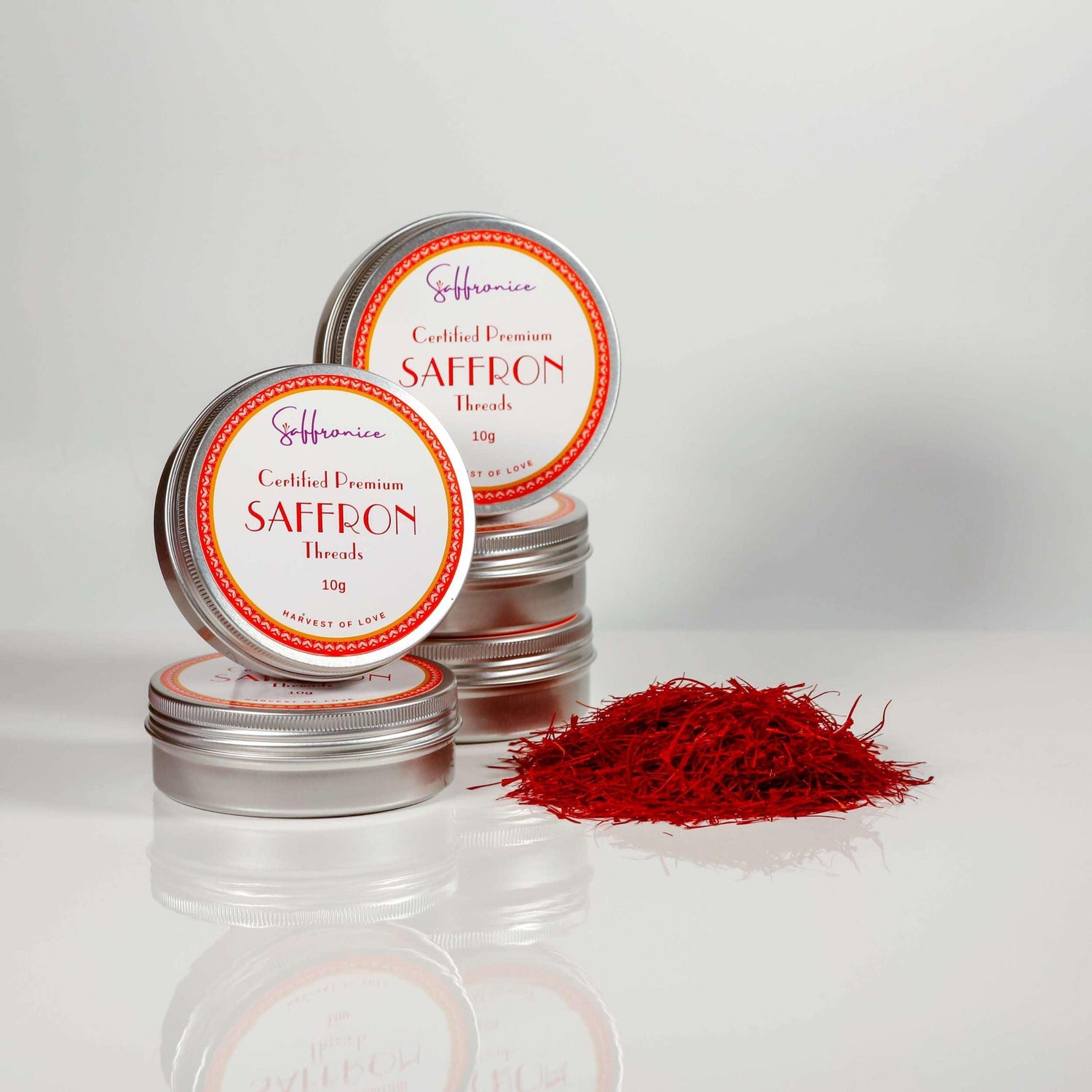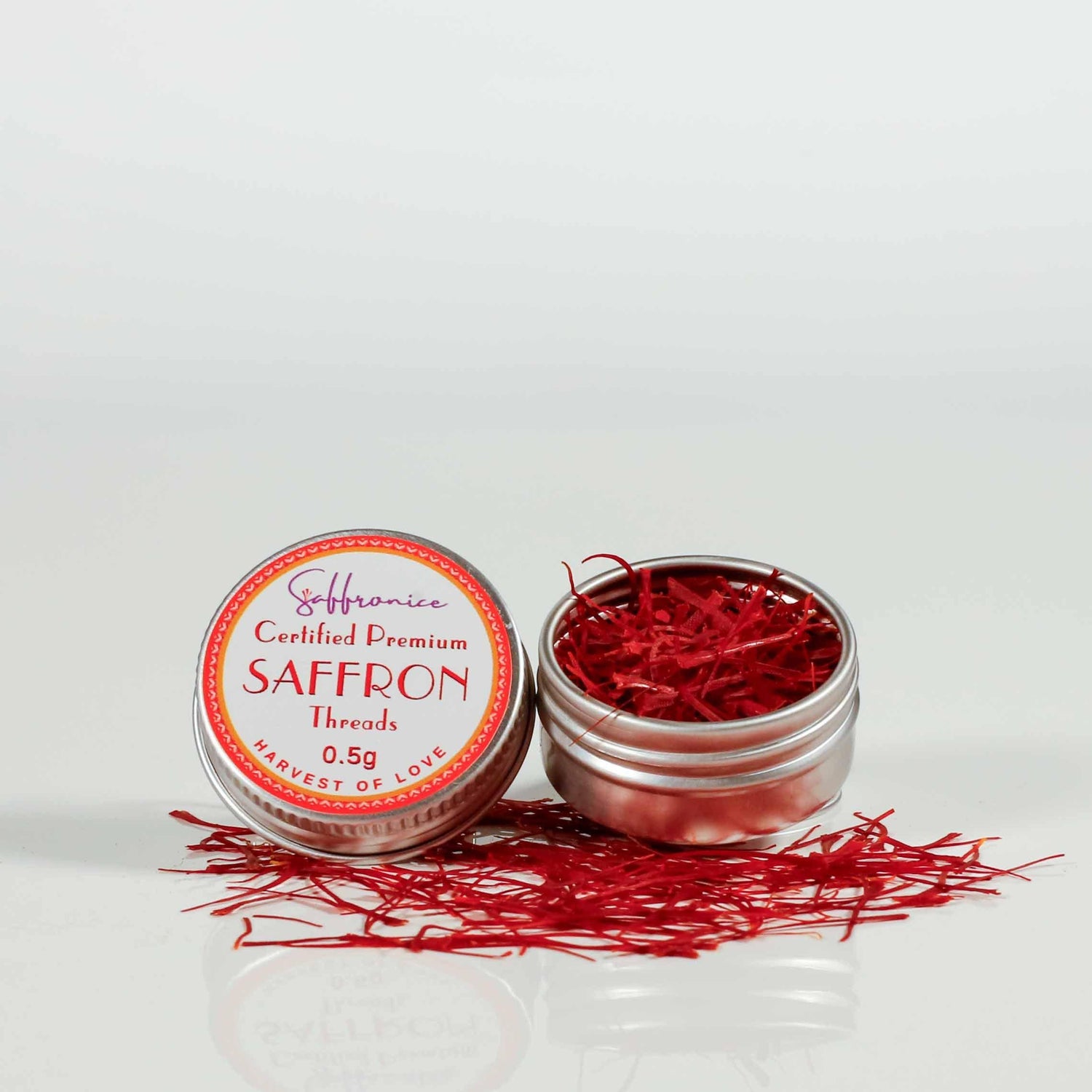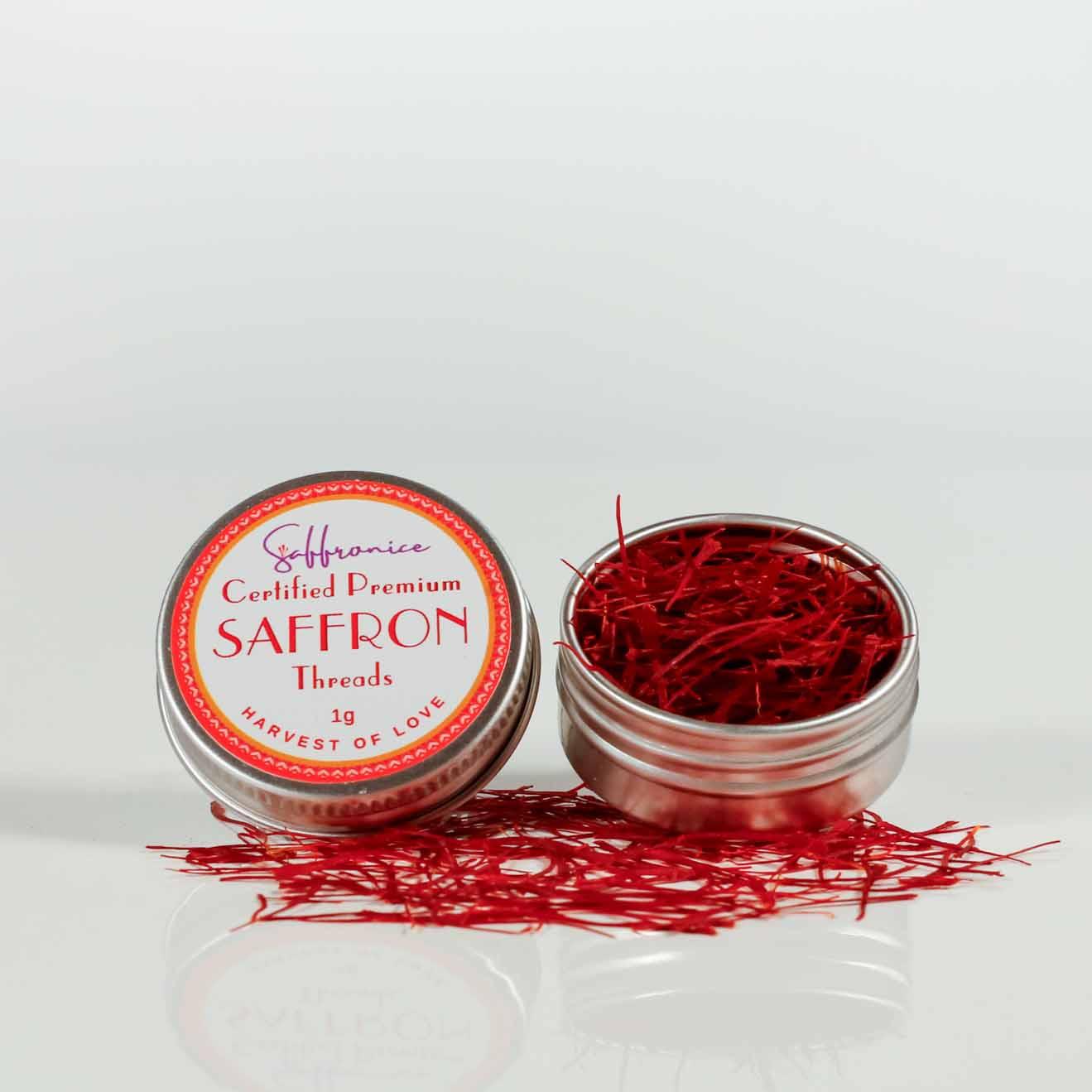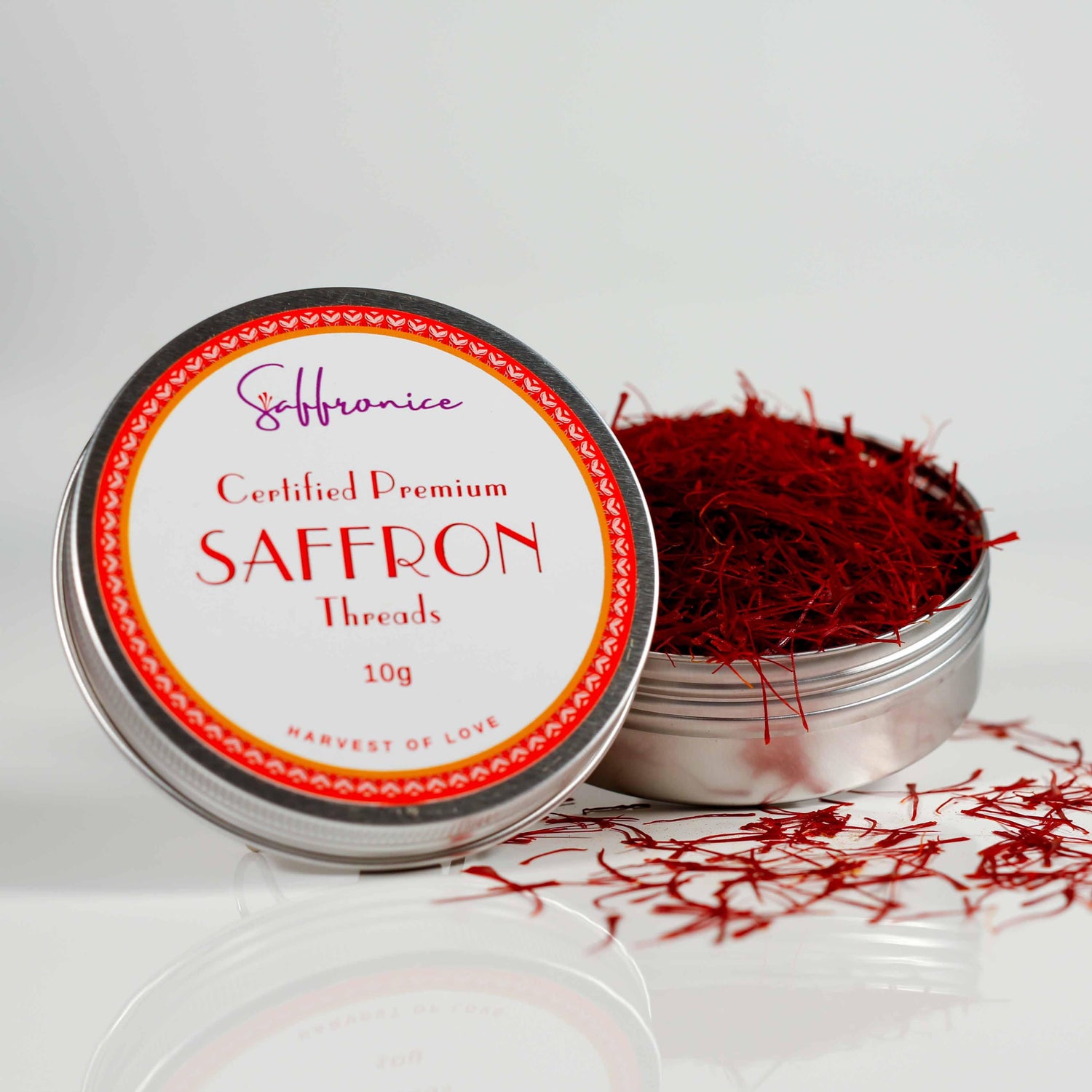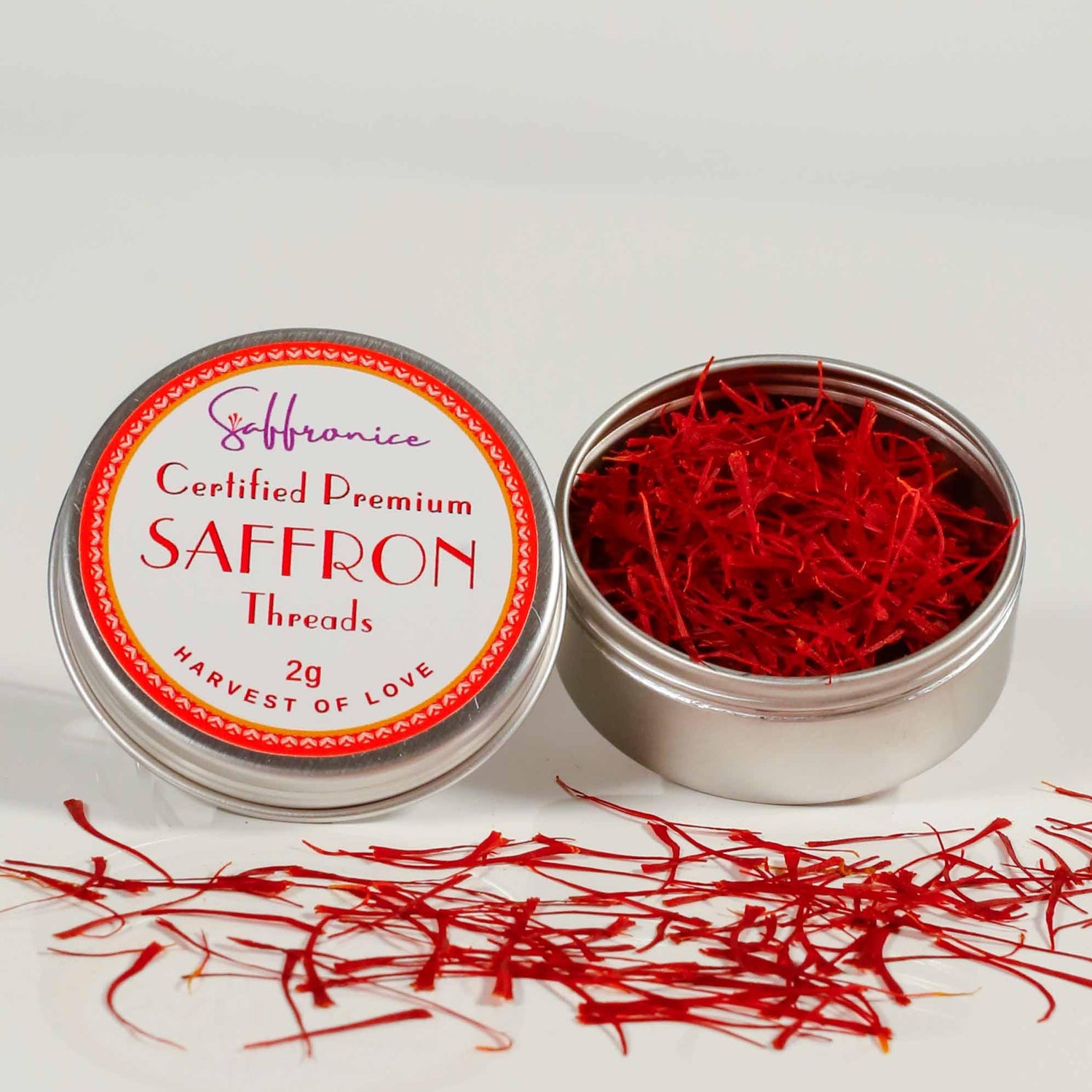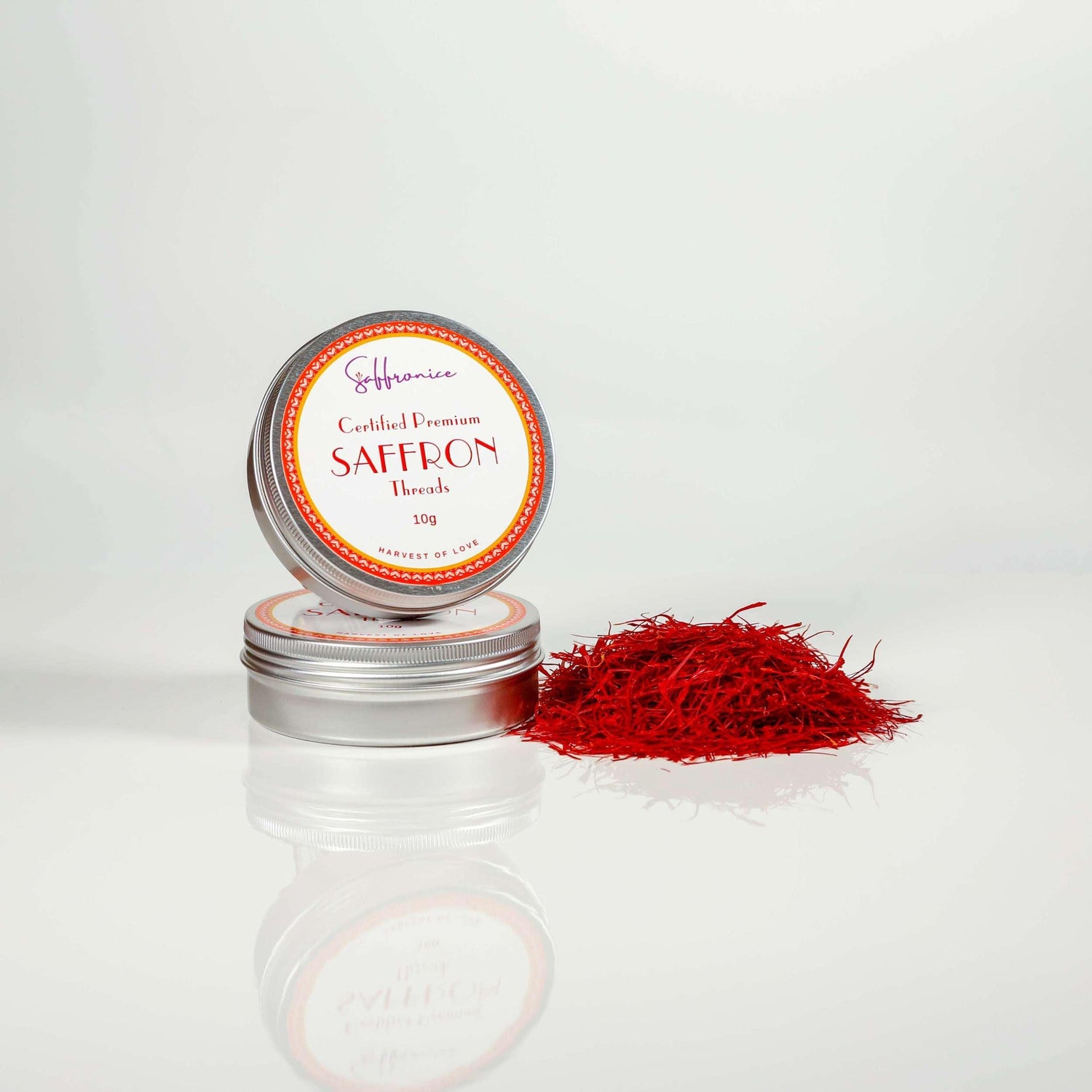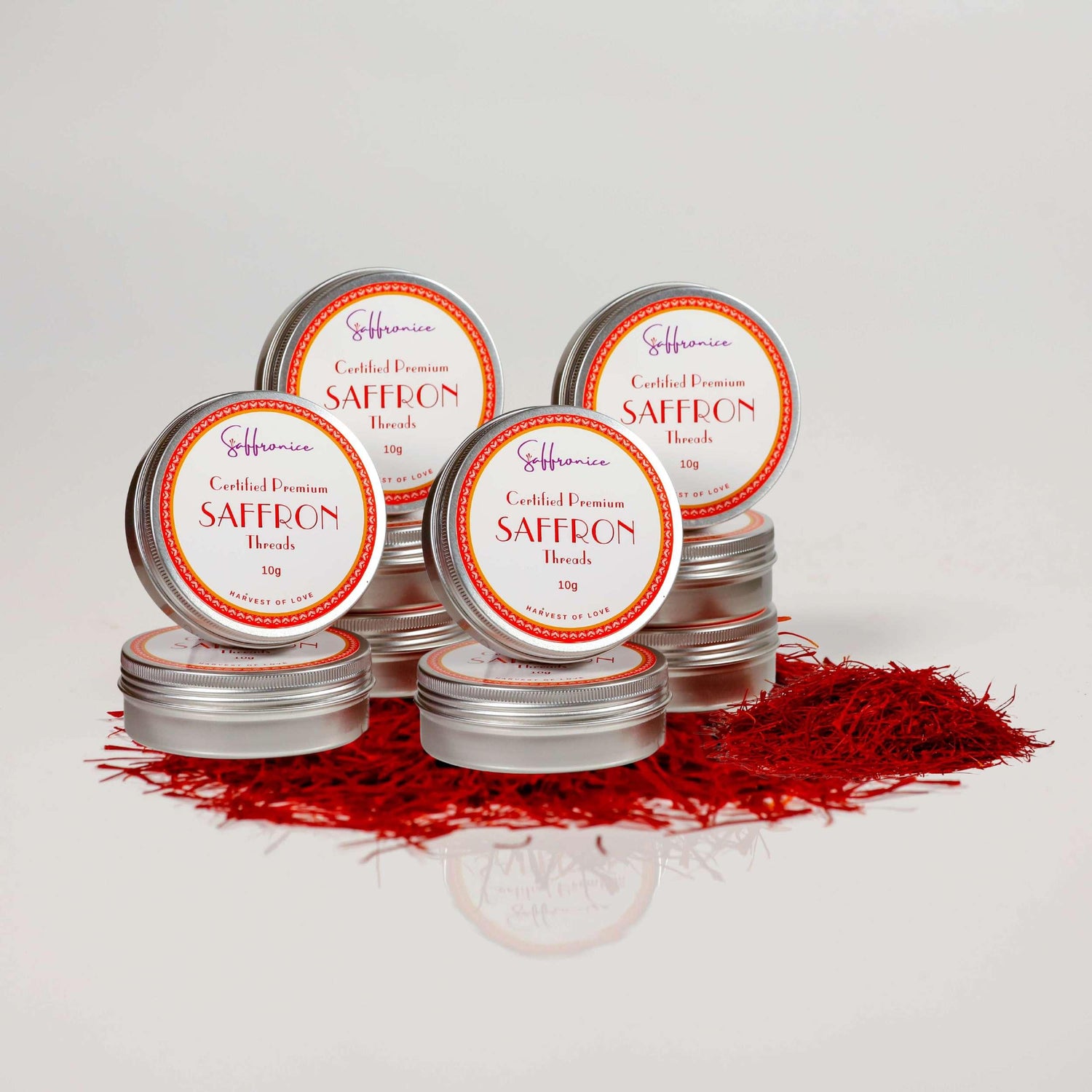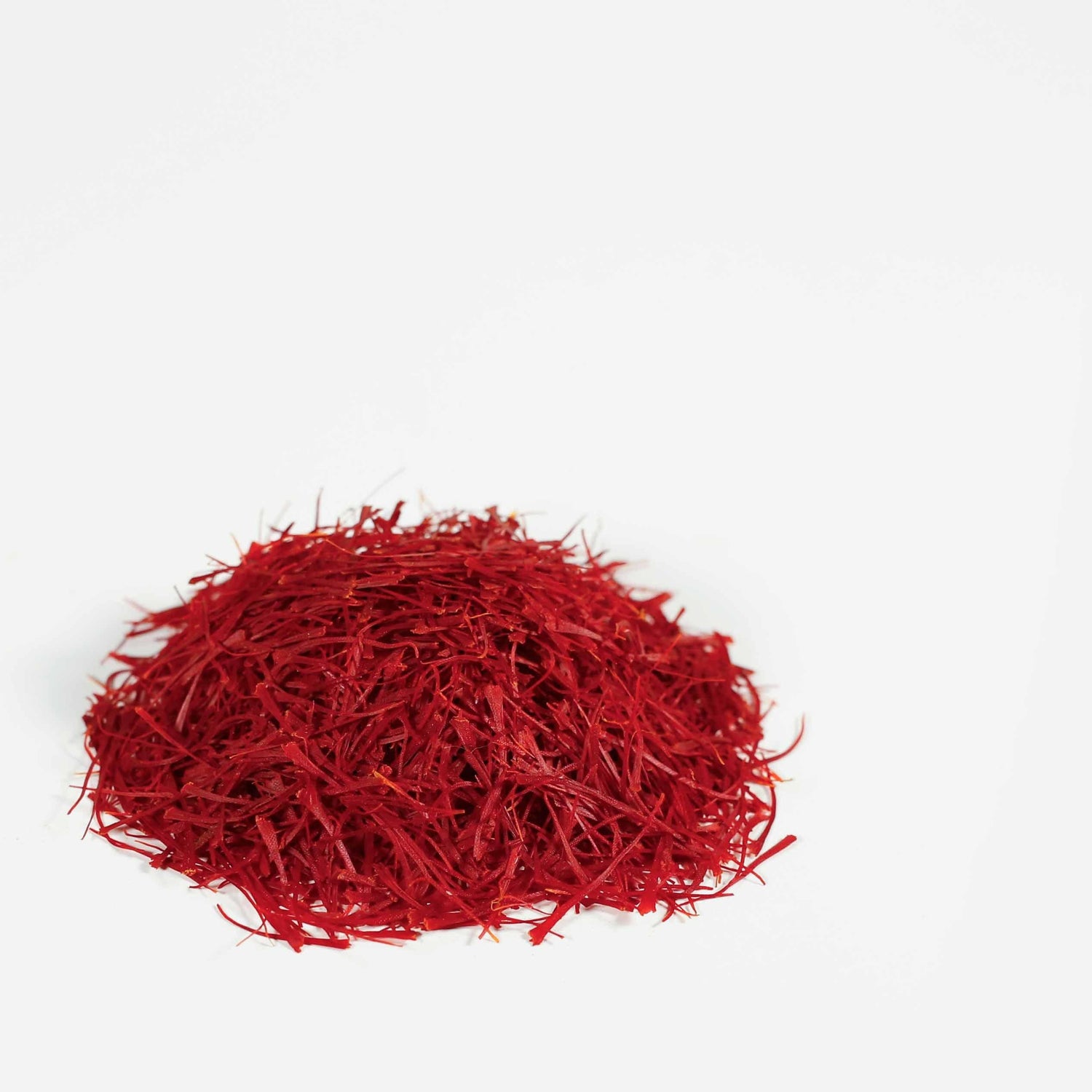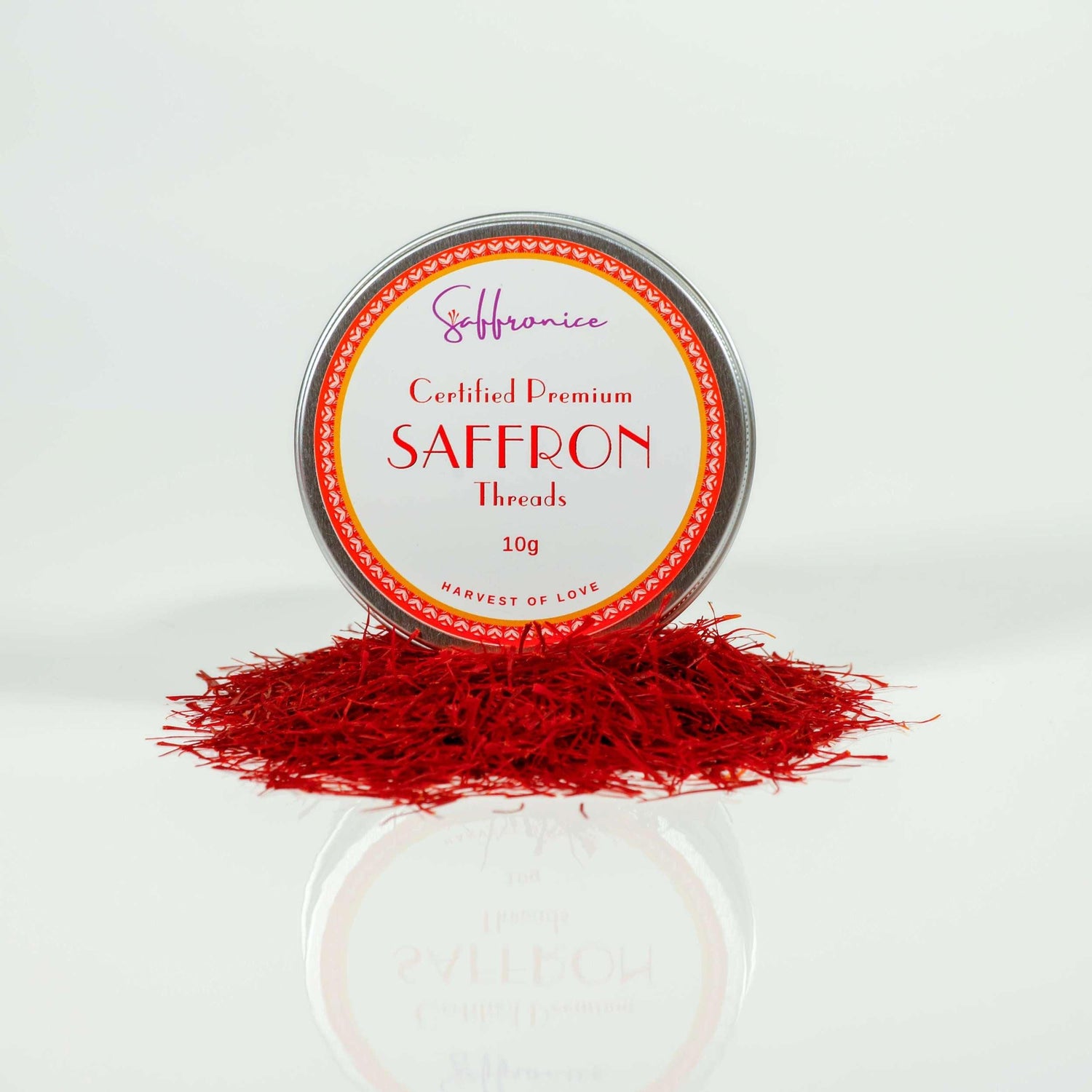Saffron, derived from the Crocus sativus flower, is one of the most valuable spices in the world. Known for its unique flavor and vibrant color, saffron has held a place of significance in various cultures throughout history—from ancient Persian cuisine and herbal medicines to traditional Indian ceremonies. Its high cost is due to the labor-intensive process of harvesting the delicate stigmas from each flower(Srivastava et al., 2010).
This guide will provide you with all the essential information for saffron cultivation at home. You'll learn about the plant's requirements, methods for planting and nurturing it, and techniques for harvesting and storing those precious saffron strands. Whether you're a novice gardener or an experienced grower looking to add a touch of luxury to your garden, this comprehensive guide has got you covered.
Understanding Saffron: A Closer Look at Crocus Sativus
What is Saffron and How is it Derived?
Saffron, often referred to as "red gold," is derived from the Crocus sativus flower. This spice is renowned for its distinctive flavor, vibrant color, and aromatic qualities. The precious saffron strands are actually the stigmas of this flower. Each Crocus sativus flower produces three red stigmas, which are meticulously hand-harvested and dried to become the saffron threads we use in cooking(Gout et al., 2010).
Unique Anatomy of the Saffron Crocus
Understanding the anatomy of the Crocus sativus helps appreciate why saffron is so valuable:
- Stigma: The crimson threads that are harvested for saffron.
- Stamen: The part of the flower responsible for producing pollen.
- Corm: A bulb-like structure from which the plant grows. Healthy corms are essential for successful saffron cultivation.
The labor-intensive harvesting process contributes significantly to saffron's high cost. It takes around 75,000 flowers to produce just one pound of saffron(Srivastava et al., 2010).
Economic Significance Across Cultures
Saffron's value extends beyond its culinary uses; it holds substantial economic importance in various cultures:
- Iran: heritage land of Saffron as a leading global producer, accounting for over 90% of total production.
- India: Particularly in Kashmir, saffron cultivation supports local economies.
- Spain: Known for its La Mancha saffron, integral to traditional dishes like paella.
Saffron also has historical significance in regions such as Greece and Morocco. Its use spans from ancient medicinal applications to modern culinary arts, showcasing its enduring legacy.
Growing saffron can be a rewarding endeavor, not only providing a unique spice but also connecting you with centuries-old agricultural traditions. If you're interested in delving into this rewarding venture, you might want to check out this complete guide on growing saffron bulbs. This resource offers valuable insights into cultivating saffron both indoors and outdoors, mastering the art of planting, nurturing, and harvesting saffron crocus bulbs. For a more detailed understanding of how saffron is grown, you can refer to this informative article on how saffron is cultivated.
Creating the Perfect Environment for Saffron Growth
Soil Requirements
Best conditions to grow saffron start with the right soil. Saffron thrives in well-drained, sandy, or loamy soil. This type of soil ensures proper drainage, preventing water from stagnating around the corms and causing rot(Renau-Morata et al., 2012).Here's how you can prepare your garden or pots:
Garden Preparation
- Test the soil pH; saffron prefers a slightly acidic to neutral pH (6.0-7.0).
- Amend heavy clay soils with sand and organic compost to improve texture and drainage.
- Create raised beds if your garden has poor natural drainage.
Pot Preparation
- Use a mix of potting soil and sand for good drainage.
- Ensure pots have adequate drainage holes.
- Place a layer of gravel at the bottom of the pot to aid water flow.
Tip: Adding organic matter like compost enhances soil fertility and structure, providing essential nutrients for saffron growth (Renau-Morata et al., 2012).
Light and Temperature
Saffron needs full sun to thrive, meaning it requires at least six hours of direct sunlight daily. Optimal light conditions ensure the plants produce vibrant flowers rich in valuable stigmas(Molina et al., 2005).
Sunlight Requirements
- Choose a planting site that receives unobstructed sunlight.
- If planting indoors, place pots near south-facing windows or use grow lights.
Temperature also plays a critical role in saffron cultivation:
Suitable Temperature Ranges
- Saffron grows best in areas where temperatures range between 50°F (10°C) and 70°F (21°C) during its growing season.
- It can tolerate colder temperatures but will need protection from extreme frost.
Pro Tip: In regions with harsh winters, consider using mulch or protective covers to insulate your saffron corms against freezing temperatures.
Creating an ideal environment by focusing on these aspects ensures your saffron plants receive the best possible start and optimal growing conditions.

Choosing Between Indoor and Outdoor Saffron Cultivation
When deciding between growing saffron indoors vs. outdoors, there are several factors to consider. Each method has its unique set of advantages and challenges:
Growing Saffron Indoors
Pros:
- Climate Control: Indoor cultivation allows better control of climate, and is ideal for those with limited outdoor space. However, it requires artificial lighting and careful temperature regulation (Renau-Morata et al., 2012).
- Space Efficiency: Perfect for those with limited outdoor space or living in urban settings.
- Protection: Reduced risk of pests and diseases that might otherwise affect outdoor plants.
Cons:
- Lighting Needs: Requires artificial lighting to supplement natural sunlight, which can increase costs.
- Limited Scale: Typically suited for smaller-scale production due to space limitations.
Growing Saffron Outdoors
Outdoor cultivation benefits from natural sunlight and airflow, promoting healthier growth but is more vulnerable to weather conditions and pests (Molina et al., 2005).
Pros:
- Natural Conditions: Utilizes natural sunlight and airflow, which can promote healthier growth.
- Larger Scale: More suitable for larger-scale cultivation as it allows more planting space.
- Lower Costs: Reduces the need for artificial lighting and environmental control systems.
Cons:
- Climate Dependency: Growth can be significantly affected by local weather conditions such as frost or excessive rain.
- Pests and Diseases: Higher susceptibility to pests, animals, and diseases compared to indoor environments.
Utilizing Protective Structures
For those opting for outdoor cultivation but seeking some benefits of indoor growing, protective structures like hoop houses offer a great middle ground. These structures:
- Shield plants from severe weather conditions.
- Help maintain a more stable microclimate.
- Offer some protection against pests while still using natural sunlight.
Whether you choose to grow your saffron indoors or outdoors, understanding each method's unique requirements will help you create the most favorable environment for your precious saffron crocus.

A Step-by-Step Guide to Planting Saffron Corms Like a Pro
Timing is Everything
Planting your saffron corms at the right time is crucial for a successful harvest. The ideal period to plant saffron corms is late summer to early autumn. This ensures that the corms have ample time to establish roots before the winter sets in, leading to healthier plants and more vibrant flowers.
Plant your saffron corms in late summer to early autumn, ensuring they have ample time to establish roots before winter. Plant corms about 10-15 cm deep and space them 10-15 cm apart (Gout et al., 2010).
Mastering the Art of Planting
To maximize your saffron yield, it's important to get the depth, spacing, and orientation just right.
- Depth: Plant the corms about 10-15 cm deep. This depth helps protect them from frost and provides sufficient room for root development.
- Spacing: Space each corm 10-15 cm apart. Proper spacing allows each plant enough room to grow without competing for nutrients, water, or light.
- Orientation: Ensure that the pointed end of each corm faces up. This is where the shoots will emerge, so correct orientation is key for proper growth.
Planting Techniques
- Prepare the Soil: Use well-drained, sandy or loamy soil. If necessary, amend your garden soil with sand or organic matter to improve drainage and fertility.
- Dig Holes: Create holes that are 10-15 cm deep and spaced 10-15 cm apart.
- Place Corms in Holes: Insert each corm into its hole with the pointed end facing upwards.
- Cover and Water: Gently cover the corms with soil and water them lightly to settle the soil around them.
By adhering to these planting tips, even beginners can cultivate saffron successfully. The perfect combination of timing, technique, and care will set you on the path to enjoying your own homegrown saffron.
Nurturing Your Saffron Plants: Watering, Fertilization, and Maintenance Tips
Striking the Right Balance
Understanding the watering needs for saffron plants is crucial. Initially, After planting, lightly water the corms to break dormancy. Water every 15 days, adjusting for rainfall (Renau-Morata et al., 2012). Organic fertilizers like compost or manure can be applied in early spring or late autumn for best results (Srivastava et al., 2010).
- Frequency: Light watering every 15 days is usually sufficient if rainfall is inadequate.
- Method: Ensure water reaches the root zone without oversaturating the soil. Overwatering can lead to rot.
- Growth Cycle Considerations: Pay special attention during dry periods and reduce watering as the plants approach dormancy.
Feeding Your Saffrons
Organic fertilizers can significantly boost the health and productivity of your saffron plants. Here are some tips on choosing and using organic fertilizers:
- Types of Fertilizers: Compost, well-rotted manure, and fish emulsion are excellent choices.
- Application Timing: Apply organic fertilizers in early spring or late autumn to provide essential nutrients when the plants need them most.
- Quantity: Avoid excessive fertilization; a light application is usually enough. An overabundance of nutrients can cause imbalances and affect flowering.
Maintenance Tips
Apart from watering and fertilizing, proper maintenance is key to ensuring your saffron plants thrive. One effective strategy is to use mulch, which can help retain soil moisture, suppress weeds, and regulate soil temperature.
Proper maintenance through balanced watering, suitable organic fertilization, and effective use of mulch ensures your saffron plants remain healthy and productive throughout their growth cycle.

Harvesting Saffron: Timing, Techniques, and Post-Harvest Care Essentials
Knowing When to Harvest
The journey of saffron from planting to harvest is a rewarding one. How long does saffron take to grow? Typically, Saffron blooms in mid-autumn, about 6-8 weeks after planting (Gout et al., 2010). Pick flowers early in the morning when fully open and gently remove the stigmas. Dry the stigmas for several days before storing them in an airtight container (Molina et al., 2005).
Identifying the right time to harvest is crucial. The flowers should be picked when they are fully open. This usually happens on sunny mornings. Keep an eye out for those vibrant purple blossoms peeking through the soil—it's your signal that harvesting time has arrived.
Step-by-Step Guide: Effective Harvesting Techniques
Harvesting saffron requires a delicate touch to ensure you get the most out of each flower while minimizing damage. Follow these steps for a successful harvest:
- Early Morning Pick: Begin your harvest early in the morning when flowers are fully open and the stigmas are fresh.
- Gently Pluck the Flowers: Carefully pluck the entire flower from its base. Handle with care to avoid bruising.
- Separate Stigmas: Hold the flower gently and use tweezers or your fingers to remove the bright red-orange stigmas (the part used as the spice). Each flower generally contains three stigmas.
- Drying: Spread the stigmas on a clean paper towel or mesh screen in a single layer. Place them in a warm, dry spot away from direct sunlight. Allow them to dry completely—this usually takes several days.
- Storage: Store dried stigmas in an airtight container, ideally in a cool, dark place to preserve their vibrant color and potent flavor.
Post-Harvest Care Essentials
After you've harvested your saffron, it's important to care for your plants properly to ensure they remain healthy for future harvests:
- Corm Management: Lift and divide corms every few years as their productivity declines after 3-5 years.
- Soil Health: Maintain soil health by adding organic fertilizers and ensuring proper drainage.
By following these techniques, you'll maximize your yield and maintain the quality of your saffron crop season after season.
Avoiding Common Pitfalls in Saffron Cultivation: Mistakes to Watch Out For!
Growing saffron can be a rewarding endeavor, Beginners often struggle with improper soil preparation, overwatering, or inadequate sunlight. Ensure soil is well-drained, water sparingly, and choose a sunny spot to avoid common cultivation mistakes (Molina et al., 2005).
1. Improper Soil Preparation
Saffron thrives in well-drained, sandy or loamy soil. Using heavy clay soil can lead to waterlogging, which may cause corm rot.
Tip: Amend your soil with sand or organic compost to improve drainage.
2. Overwatering
While saffron needs moisture, too much water can be detrimental. Overwatering can promote fungal diseases and rot.
Tip: Water sparingly and ensure the soil dries out between watering sessions.
3. Incorrect Planting Depth
Planting corms too shallow or too deep affects their growth. The ideal depth is 10-15 cm with the pointed end facing up.
Tip: Use a trowel to measure and plant corms at the correct depth.
4. Inadequate Sunlight
Saffron requires full sun to partial shade for optimal growth. Planting in a shady area can result in weak plants and poor flowering.
Tip: Choose a sunny spot in your garden or use grow lights if cultivating indoors.
5. Neglecting Corm Management
Over time, corms multiply and get crowded, reducing productivity.
Tip: Lift and divide corms every few years to maintain healthy growth and increase yield.
Avoid these common pitfalls, and you'll be on your way to successfully cultivating this precious spice!
Conclusion
Start your journey of growing saffron today and experience the pleasure of nurturing one of the most prized spices globally. By following this guide, you with the necessary information to grow saffron successfully at home, covering everything from understanding the requirements of Crocus sativus to perfecting the harvesting process.
For more detailed tips and resources:
- Saffron Growing Guide by Home Gardeners
- Saffron Cultivation Techniques: A Deep Dive
Happy gardening!

FAQs (Frequently Asked Questions)
What is saffron and how is it derived?
Saffron is a valuable spice derived from the stigma of the Crocus sativus flower. The unique anatomy of this flower, including its stigma and stamen, plays a crucial role in the production of saffron, which is highly prized for its flavor, color, and medicinal properties across various cultures.
What are the best conditions for growing saffron?
Saffron thrives in well-drained sandy or loamy soil and requires full sun exposure. It's essential to prepare the soil properly to ensure optimal growth conditions, as poor drainage can lead to root rot and other issues.
Should I grow saffron indoors or outdoors?
The decision to grow saffron indoors or outdoors depends on your available space and climate control preferences. Growing indoors allows for better climate management, while outdoor cultivation benefits from natural sunlight. Protective structures like hoop houses can also be used to create an ideal environment for saffron plants.
When is the best time to plant saffron corms?
Timing is crucial when planting saffron corms. Generally, they should be planted in late summer to early fall, allowing them to establish roots before winter. Proper depth, spacing, and orientation during planting will also enhance growth.
How do I care for my saffron plants?
Caring for saffron plants involves understanding their watering needs throughout their growth cycle and using suitable organic fertilizers to boost their health. Striking the right balance in watering is key to preventing overwatering or underwatering.
What should I know about harvesting saffron?
Saffron typically takes around 6-8 weeks from flowering to maturity. Knowing when to harvest is important; flowers should be picked early in the morning when they first bloom. Employing effective harvesting techniques will minimize damage to both flowers and stigmas.
Reference:
Srivastava, R., Ahmed, H., Dixit, R. K., & Dharamveer, D. (2010). Crocus sativus L.: A comprehensive review. Pharmacognosy Reviews, 4(8), 200-208. https://doi.org/10.4103/0973-7847.70919
Gout, B., Bourges, C., & Paineau-Dubreuil, S. (2010). Satiereal, a Crocus sativus L. extract, reduces snacking and increases satiety in a randomized placebo-controlled study of mildly overweight, healthy women. Nutrition Research, 30(5), 305-313. https://doi.org/10.1016/j.nutres.2010.04.007
Molina, R. V., Valero, M., Navarro, Y., & Guardiola, J. L. (2005). Temperature effects on flower formation in saffron (Crocus sativus L.). Scientia Horticulturae, 103(3), 361-379. https://doi.org/10.1016/j.scienta.2004.07.008
Renau-Morata, B., Nebauer, S. G., & Guardiola, J. L. (2012). Water-deficit tolerance and antioxidant systems in saffron (Crocus sativus L.) plants grown under controlled conditions. Acta Physiologiae Plantarum, 34(4), 1285-1297. https://doi.org/10.1007/s11738-012-0933-7







